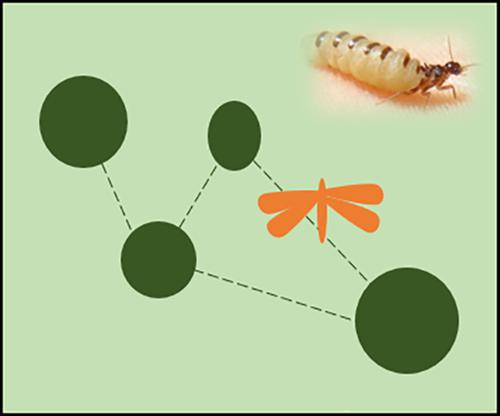当前位置:
X-MOL 学术
›
Insect Conserv. Divers.
›
论文详情
Our official English website, www.x-mol.net, welcomes your
feedback! (Note: you will need to create a separate account there.)
Effects of habitat loss on the genetic diversity of Embiratermes neotenicus (Isoptera) in a fragmented landscape of the Atlantic Forest, Brazil
Insect Conservation and Diversity ( IF 3.2 ) Pub Date : 2020-03-10 , DOI: 10.1111/icad.12414 Alane Ayana Vieira de Oliveira Couto 1 , Simon Hellemans 2, 3 , Yves Roisin 2 , Martín Alejandro Montes 4 , Alexandre Vasconcellos 1
中文翻译:

在巴西大西洋森林的零散景观中,栖息地的丧失对新ten蝶(等翅目)遗传多样性的影响
更新日期:2020-03-10
Insect Conservation and Diversity ( IF 3.2 ) Pub Date : 2020-03-10 , DOI: 10.1111/icad.12414 Alane Ayana Vieira de Oliveira Couto 1 , Simon Hellemans 2, 3 , Yves Roisin 2 , Martín Alejandro Montes 4 , Alexandre Vasconcellos 1
Affiliation

|
- Connectivity loss during habitat fragmentation poses a serious threat to global biodiversity. The effects of this process depend on factors such as the dispersal ability and breeding systems of each species, the type of land use surrounding the habitat remnants and the position of fragments in the landscape.
- Termites are abundant in tropical ecosystems, and within this group, soil‐feeding species are the most sensitive to environmental degradation.
- We investigated whether the fragmentation of the Atlantic Forest that occurred approximately 110 years ago because of sugarcane plantations in Northeast Brazil affected the genetic diversity of a population of Embiratermes neotenicus (Termitidae: Syntermitinae) in 14 fragments separated by 3–104 m over an extent of 20 km.
- For 10 nests in each fragment, 10 individuals (n = 1400) were genotyped at five microsatellite loci. Our results show that the population exhibits weak genetic structure, with no relations between genetic variability and fragment features.
- This result may be explained by the extraordinarily long lifespan of individual colonies, given this species' peculiar breeding system, offering several opportunities for dispersal events and patch colonisation.
- Landscape features such as the arrangement of forest fragments and seasonal nature of the sugarcane matrix could enable this species to maximise dispersal success and avoid local extinction.
中文翻译:

在巴西大西洋森林的零散景观中,栖息地的丧失对新ten蝶(等翅目)遗传多样性的影响
- 生境破碎化过程中的连通性丧失对全球生物多样性构成了严重威胁。该过程的影响取决于多种因素,例如每种物种的扩散能力和繁殖系统,栖息地残余物周围的土地利用类型以及景观中碎片的位置。
- 白蚁在热带生态系统中非常丰富,在这一组中,以土壤为食的物种对环境退化最敏感。
- 我们调查了大约110年前因巴西东北部的甘蔗种植而发生的大西洋森林碎片化是否影响了14个以3–104 m间隔分开的碎片中新松柏(Termiraidaes:Syntermitinae)种群的遗传多样性。 20公里。
- 对于每个片段中的10个巢,在五个微卫星基因座上对10个个体(n = 1400)进行基因分型。我们的结果表明,该种群表现出较弱的遗传结构,与遗传变异性和片段特征之间没有关系。
- 考虑到该物种独特的育种系统,该结果可以用单个菌落的超长寿命来解释,该物种为分散事件和斑块定殖提供了一些机会。
- 景观特征,例如森林碎片的排列和甘蔗基质的季节性,可以使该物种最大程度地成功传播并避免局部灭绝。











































 京公网安备 11010802027423号
京公网安备 11010802027423号